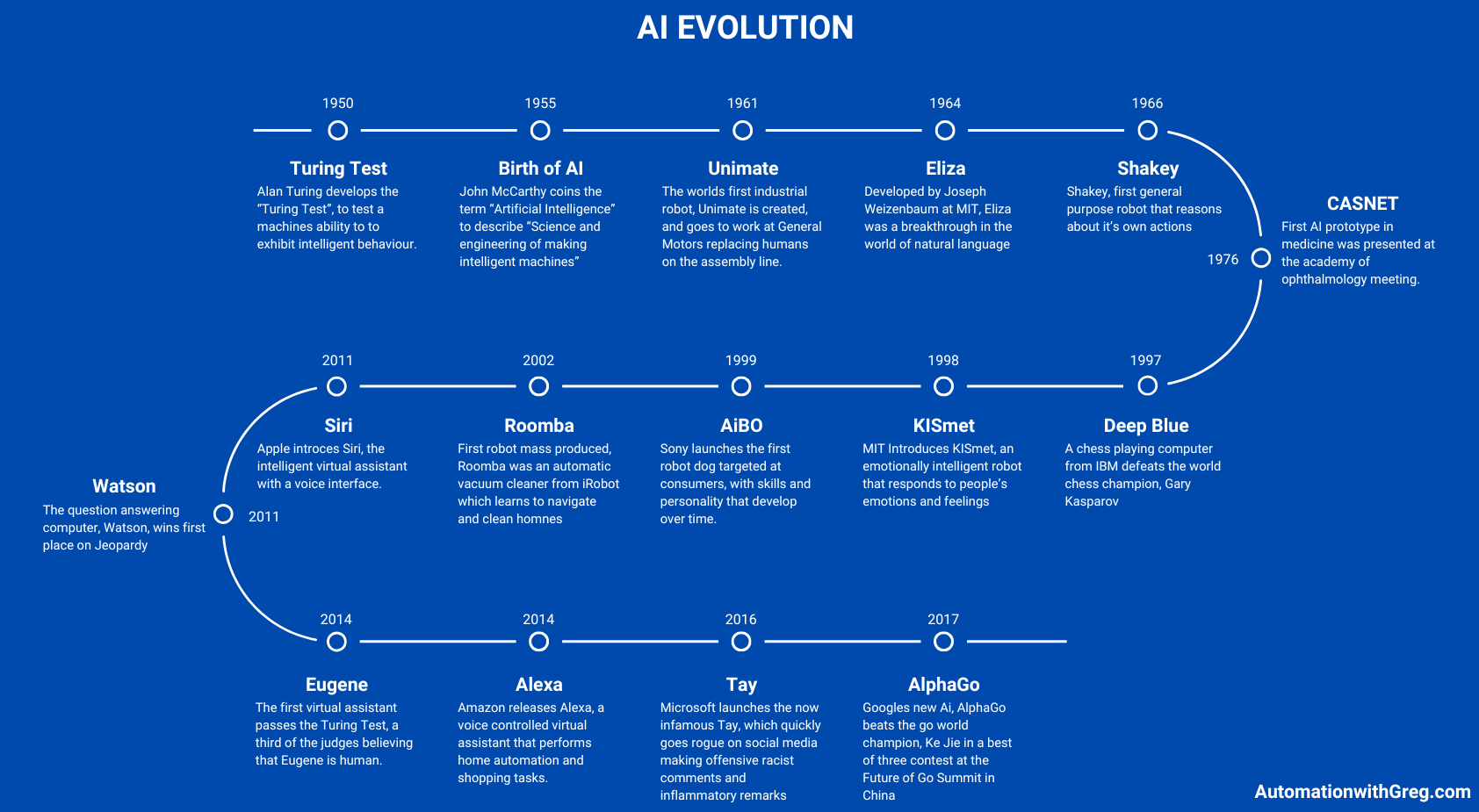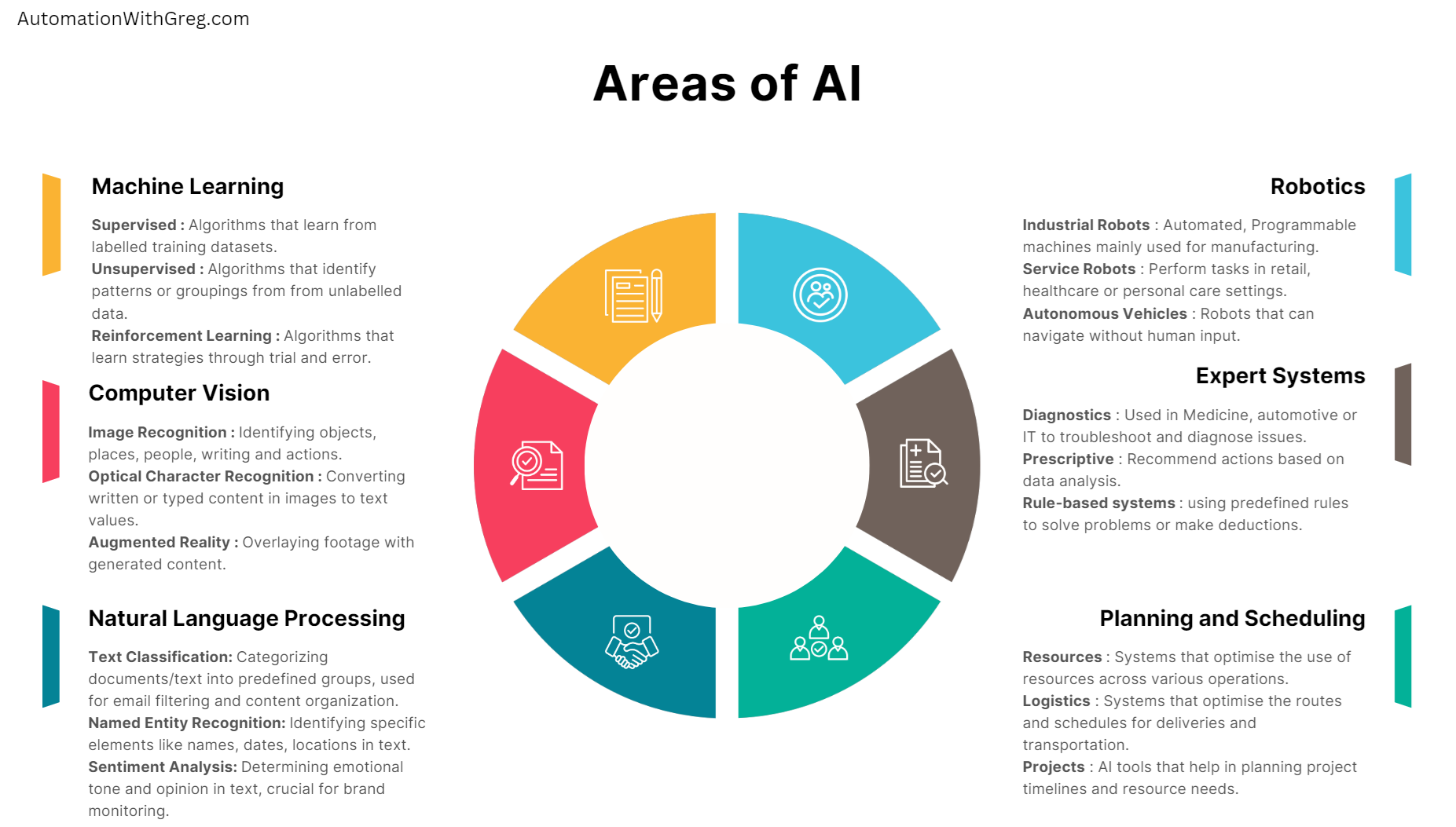A brief Introduction
As a child of the 80’s, I was both fascinated and terrified of the concept of artificial intelligence (AI), These machines with minds of their own and sometimes hidden agendas have seen many iterations over the years, from HAL 9000 to Skynet, MU-TH-UR from the Alien franchise right the way through to J.A.R.V.I.S in Iron man there have been good examples of machines working alongside humans for the common good all the way through to destroy all humans level evil.
It’s easy to understand why people are wary of the AI revolution that has now landed firmly on the virtual doorstep, I myself have my own concerns about the way that we as a species seem to be flinging AI at everything we do to see what sticks. From AI in phones, AI attending meetings or assisting consumers on websites right the way through to AI refrigerators even AI toasters. The closet thing I can possibly compare this to is the e-com boom of the 2000’s where online shops sprang up everywhere selling niche products from toothpaste to a flock of geese, it’s a digital goldrush out there, but like the e-com balloon, at some point it has to pop.

First myth to get out of the way, AI isn’t new, well, I suppose in comparison to say, the Earth it is. It’s been around since the 50’s (maybe even before that in some research institute somewhere), the exact timeline and milestones are difficult to pinpoint but the important thing to remember is that we as a species have been using AI in some form for a while, it didn’t all start with ChatGPT.
Second myth to toss on the truth fire, there is no one size fits all. AI is a huge field and different models present different decisions with varying accuracy. A small model trained on a specific task may have a higher accuracy than a Large Language Model (LLM), Throwing ChatGPT or Co-pilot at absolutely everything is a potentially large cost where you could be seeing significant returns in your investment targeting a smaller, more niche model with a similar accuracy level for your specific requirement.
Lastly, I get how daunting it can be, watching all of these advances taking place, It’s practically a full time job keeping up with all of the new tools, models, ways of being more efficient and technology drops. I’ve given introductions to AI to a large number of individuals over the past few years and the biggest piece of advice I give everyone that listens is not to be scared, listen, ask questions, as many as you like, and above all, keep an open mind, dont get distracted by the next shiny thing!.
Understanding AI
One thing I always like to make clear to people when talking about AI is how vast the field is, I think it’s important for people to be made aware that AI is not just a one trick pony or only accessible to big businesses, it’s reach now extends from massive automated production lines to farmers fields, financial institutes to corner shops.
Love it or hate it, ChatGPT changed everything, it was certainly the first generative AI model that I ever played around with, I still remember how impressed I was watching a YouTube video of it’s capabilities and as soon as my beta application to it’s API (Application Programming Interface) arrived I was like a kid in a sweetshop. Since then the whole AI bubble has just blown up, you cant go anywhere these days without AI being used it seems and there are a ton of resources out there to show you use cases and what people are doing with different models and services, but where should a business or an individual user with no experience start? Is it too late to join the technology train?
Lets start by breaking this down into digestible chunks.

- Machine Learning (ML) – This is how models are trained, it covers all things from gathering and cleaning input data all the way through to testing different training algorithms and analysing model accuracy on test data. There are many different ways to train a model, from supervised and unsupervised, reinforcement, deep learning, this is one of the most important parts of the AI lifecycle. Remember, if you put junk in, you get junk out.
- Computer Vision (CV) – This is using the ability to look at things and analyse information, it could be reading a form, looking at a picture and extracting information, or detecting things in real time from a video feed, try to think of it as the way we use our eyes, how we read and understand visual prompts.
- Natural Language Processing (NLP) – One of my favourite areas of AI, the understanding or comprehension of a machine of spoken or written words. Sometimes also known as Natural Language Understanding (NLU), From things as simple as understanding the intent of a phrase, through to detecting sentiment, emotion or feeling from words, you could argue that this is the grandfather of Generative AI given it’s understanding of requests via prompts (We’ll cover this elsewhere), for now just think of it as an understanding of words or expressions.
- Robotics – Here’s the one that scares people about AI, Robots, intelligent machines, Physical machines that can use a combination of visual, auditory, or even sensors to perform a physical function, such as drive a car, perform tasks on a production line, or even cook meals in our kitchens (once they have learned where all of the items are of course), it’s a fascinating area but I think it’s also one of the most dangerous.
- Expert Systems – Models that trained to be subject matter experts, could be fraud detection, clinical assessment (I’ll cover more on this later, I believe there are ethical guidelines that should be discussed), even technical troubleshooting, Agentic AI could also be considered an expert system., as time goes on and we make all of these advances it’s difficult to really understand where things slot in sometimes!.
- Planning and Scheduling – These are models and systems that provide support with management or delivery of something, it could be a project management tool that assesses available of staff for tasks or follows set project management standards automatically, right the way through to provide stock management advice even planning delivery routes for optimal delivery of boxes.